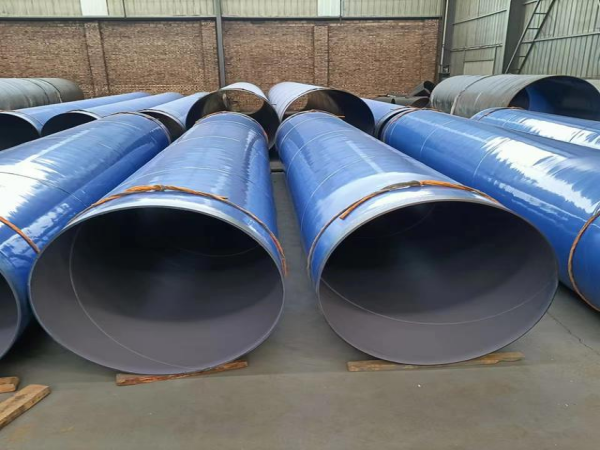Pipe Coatings and Their Role in OCTG Casing Pipe Preservation
Preserving the longevity and performance of OCTG casing pipes is a critical focus in the oil and gas industry. Among the many methods employed, pipe coatings stand out as a highly effective strategy. These coatings are designed to protect casing pipes from corrosion, abrasion, and chemical damage, thereby ensuring operational efficiency and reliability in harsh drilling environments.OCTG is a collective term that encompasses a wide range of seamless and welded pipes used in drilling and production operations. The harsh environments and corrosive nature of oil and gas operations pose significant challenges to the durability and longevity of these casings. This article explores the importance of pipe coatings in preserving OCTG casing and the various types of coatings used in the industry.
Understanding OCTG Casing
OCTG casing is primarily used for drilling wells and is subjected to demanding conditions such as high pressures, corrosive fluids, and extreme temperatures. Casing failure can lead to catastrophic consequences, including production delays, environmental damage, and costly repairs. To mitigate these risks, the industry relies on various protective measures, with pipe coatings playing a vital role.
Understanding the Importance of Pipe Coatings
Pipe coatings play a significant role in shielding casing pipes from external and internal threats. In oilfield operations, pipes face exposure to corrosive substances, moisture, and extreme temperatures. Without proper protection, their structural integrity may deteriorate over time, resulting in costly failures. By applying advanced coatings, the lifespan of OCTG casing pipes can be significantly extended, enhancing their value and usability.
Types of Pipe Coatings
1. Fusion-Bonded Epoxy (FBE) Coatings
FBE coatings are widely used in the industry due to their excellent adhesion, impact resistance, and resistance to cathodic disbondment. The process involves heating the pipe surface and applying an epoxy powder that melts and fuses to form a protective layer. FBE coatings provide excellent protection against corrosion caused by water, soil, and other corrosive agents.
2. Thermoplastic Coatings
Thermoplastic coatings, such as polyethylene (PE) and polypropylene (PP), are frequently used for their resistance to chemicals, impact, and abrasion. These coatings are applied using various techniques, including extrusion, injection molding, and powder coating. Thermoplastic coatings offer high-temperature resistance and can be tailored to meet specific environmental and operational requirements.
3. Three-Layer Polyethylene (3LPE) and Three-Layer Polypropylene (3LPP) Coatings
3LPE and 3LPP coatings combine the protective properties of FBE with the mechanical strength and chemical resistance of thermoplastics. These coatings consist of a fusion-bonded epoxy layer, followed by an adhesive layer and a topcoat of polyethylene or polypropylene. 3LPE and 3LPP coatings are widely used in offshore and onshore applications due to their excellent performance against corrosion, abrasion, and mechanical damage.
4. Cementitious Coatings
Cementitious coatings, such as liquid-applied coatings and cement-mortar linings, are commonly used in OCTG casing for their ability to withstand high temperatures and pressures. These coatings provide excellent protection against corrosion, particularly in wells where high acid or sour gas content is present. Cementitious coatings offer good adhesion, impact resistance, and resistance to chemical attack.These coatings are effective in environments where mechanical stress is prevalent. Their robust nature ensures pipes can withstand pressure and impact without significant wear.
5.Internal Plastic Coatings (IPC):
IPCs provide internal protection against corrosive fluids, minimizing the risk of contamination. They are especially useful in pipes transporting water or hydrocarbons with high salinity.

Benefits of Coating OCTG Casing Pipes
The use of coatings provides multiple advantages, contributing to the long-term sustainability of casing pipes. Firstly, they reduce maintenance costs by minimizing the frequency of repairs and replacements. Secondly, coatings improve resistance to mechanical and environmental stress, ensuring pipes remain operational under challenging conditions. Lastly, coated pipes help in maintaining the quality of transported materials, particularly in sensitive applications where contamination could pose a problem.
Factors to Consider When Selecting Coatings
Choosing the right coating involves assessing several factors, including environmental conditions, chemical exposure, and operational temperature. For example, pipes operating in subsea environments require coatings with high saltwater resistance, while those used in desert regions need protection against extreme heat. Additionally, the compatibility of coatings with existing pipeline systems is crucial to avoid performance inconsistencies.
Enhancing Efficiency Through Proper Application
To maximize the benefits of coatings, the application process must be precise and thorough. Surface preparation is a vital step, as any impurities can compromise the coating’s adhesion. Advanced techniques, such as sandblasting and pre-heating, ensure the pipe surface is adequately prepared. Post-application inspections further guarantee that coatings meet quality standards and provide optimal performance.
The Role of Innovations in Pipe Coating Technologies
As drilling operations become more complex, innovations in coating technologies continue to evolve. Nanotechnology and advanced polymers are revolutionizing the industry, offering coatings with enhanced durability and multifunctional capabilities. These advancements not only extend pipe longevity but also contribute to more sustainable practices by reducing material waste and energy consumption.
Conclusion
Pipe coatings are indispensable in preserving the performance and reliability of OCTG casing pipes. By providing robust protection against corrosion, chemical exposure, and physical damage, they ensure pipelines remain operational under the most demanding conditions. Selecting the right coating, combined with precise application methods, allows industries to achieve cost-effective and sustainable operations.
Implementing effective pipe coating strategies is essential for safeguarding investments and ensuring the success of oil and gas exploration projects worldwide.






 English
English Español
Español بالعربية
بالعربية











 Phone :
Phone :  Whatsapp :
Whatsapp :  Email :
Email : 


